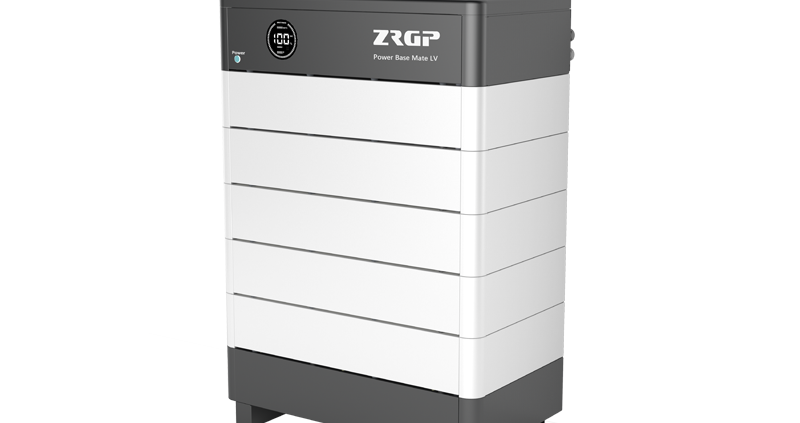Lithium-Ion Battery Cell Manufacturing Process: A Complete Guide
In recent years, the demand for lithium-ion batteries has surged, driven by the growing need for energy storage solutions in various industries, including automotive, electronics, and renewable energy. As a result, understanding the manufacturing process of lithium-ion battery cells has become increasingly important.
Importance of Lithium-Ion Batteries
Lithium-ion batteries are preferred over traditional lead-acid batteries due to their higher energy density, longer lifespan, and lighter weight. They play a crucial role in powering electric vehicles (EVs), smartphones, laptops, and even grid-scale energy storage systems.
Basics of Lithium-Ion Battery Chemistry
Lithium-ion batteries consist of several key components, including anode, cathode, separator, electrolyte, and current collectors. The movement of lithium ions between the anode and cathode during charge and discharge cycles is what enables the battery to store and release energy efficiently.
Lithium-Ion Battery Cell Manufacturing Process Overview
The manufacturing process of lithium-ion battery cells involves several intricate steps to ensure the quality and performance of the final product.
Preparation of Electrode Materials
The first step in the manufacturing process is the preparation of electrode materials, which typically involve mixing active materials, conductive additives, and binders to form a slurry.
Electrode Coating
The electrode slurry is then coated onto metal foils, such as aluminum for the cathode and copper for the anode, using a process known as electrode coating.
Assembly of Battery Cells
Once the electrodes are coated, they are assembled into battery cells along with separators and electrolytes. This assembly process requires precision and careful handling to avoid contamination and ensure uniformity.
Steps in the Lithium-Ion Battery Cell Manufacturing Process
Mixing of Active Materials
The active materials, such as lithium cobalt oxide for the cathode and graphite for the anode, are mixed with conductive additives and binders to form a homogeneous slurry.
Coating Process
The electrode slurry is then coated onto metal foils using a coating machine, which spreads the slurry evenly to achieve the desired thickness.
Calendering
After coating, the electrodes undergo a calendering process to compress them and improve their density and conductivity.
Slitting and Winding
The coated foils are then slit into strips and wound together with separators to form jelly rolls, which are the building blocks of lithium-ion battery cells.
Electrolyte Filling
The jelly rolls are immersed in electrolyte solution to impregnate the separator and facilitate ion transport within the battery cell.
Sealing
Once the electrolyte filling is complete, the battery cells are sealed to prevent leakage and contamination.
Quality Control in Lithium-Ion Battery Manufacturing
Quality control is a critical aspect of lithium-ion battery manufacturing to ensure the safety and reliability of the final product.
In-line Quality Checks
Various in-line quality checks, such as thickness measurement, coating uniformity, and porosity analysis, are conducted throughout the manufacturing process to detect any defects or deviations from specifications.
Post-Assembly Testing
After assembly, the battery cells undergo rigorous testing, including capacity measurement, cycle life testing, and safety testing, to verify their performance and compliance with industry standards.
Environmental Considerations in Lithium-Ion Battery Manufacturing
As the demand for lithium-ion batteries continues to grow, there is increasing focus on environmental sustainability and responsible manufacturing practices.
Recycling
Efforts are underway to develop efficient recycling processes to recover valuable materials from end-of-life lithium-ion batteries and reduce the environmental impact of battery production and disposal.
Waste Management
Proper waste management practices, such as the safe handling and disposal of battery manufacturing by-products and waste materials, are essential to minimize environmental pollution and ensure regulatory compliance.
The manufacturing process of lithium-ion battery cells is a complex yet essential endeavor that requires careful attention to detail, quality control, and environmental stewardship. By understanding the intricacies of this process and embracing innovation and sustainability, we can continue to advance the development and adoption of lithium-ion batteries as a key enabler of a clean and electrified future.
FAQs:
- What are the main components of a lithium-ion battery?A lithium-ion battery consists of anode, cathode, separator, electrolyte, and current collectors.
- How are lithium-ion batteries recycled?Lithium-ion batteries can be recycled through processes such as mechanical shredding, hydrometallurgical treatment, and pyrometallurgical recovery.
- What are some challenges in lithium-ion battery manufacturing?Challenges in lithium-ion battery manufacturing include ensuring uniform coating thickness, minimizing defects, and optimizing production efficiency.
- Are there alternatives to lithium-ion batteries?Yes, alternatives to lithium-ion batteries include solid-state batteries, flow batteries, and sodium-ion batteries, among others.
- How long do lithium-ion batteries typically last?The lifespan of lithium-ion batteries depends on various factors, including usage patterns, operating conditions, and maintenance practices, but they typically last for several years before requiring replacement.



